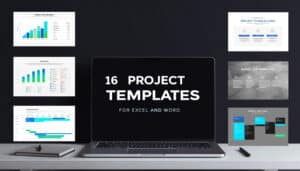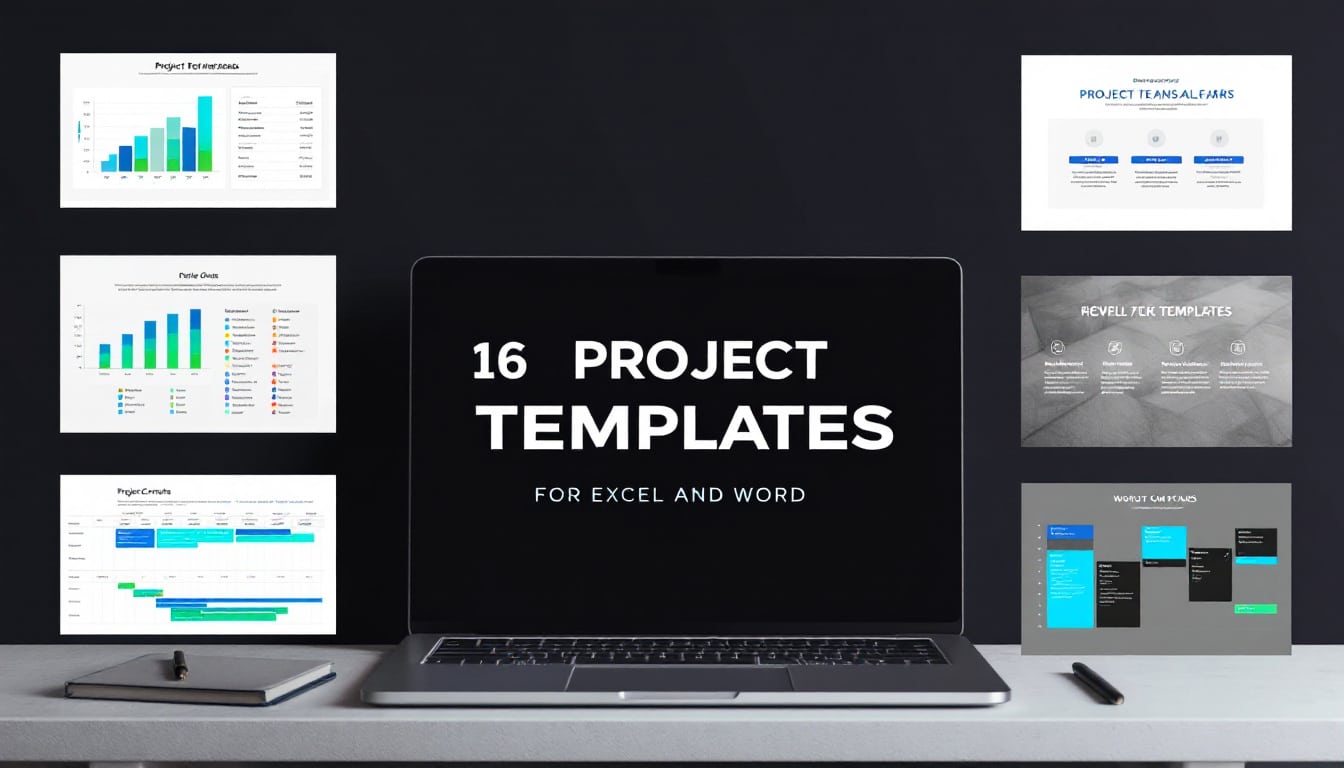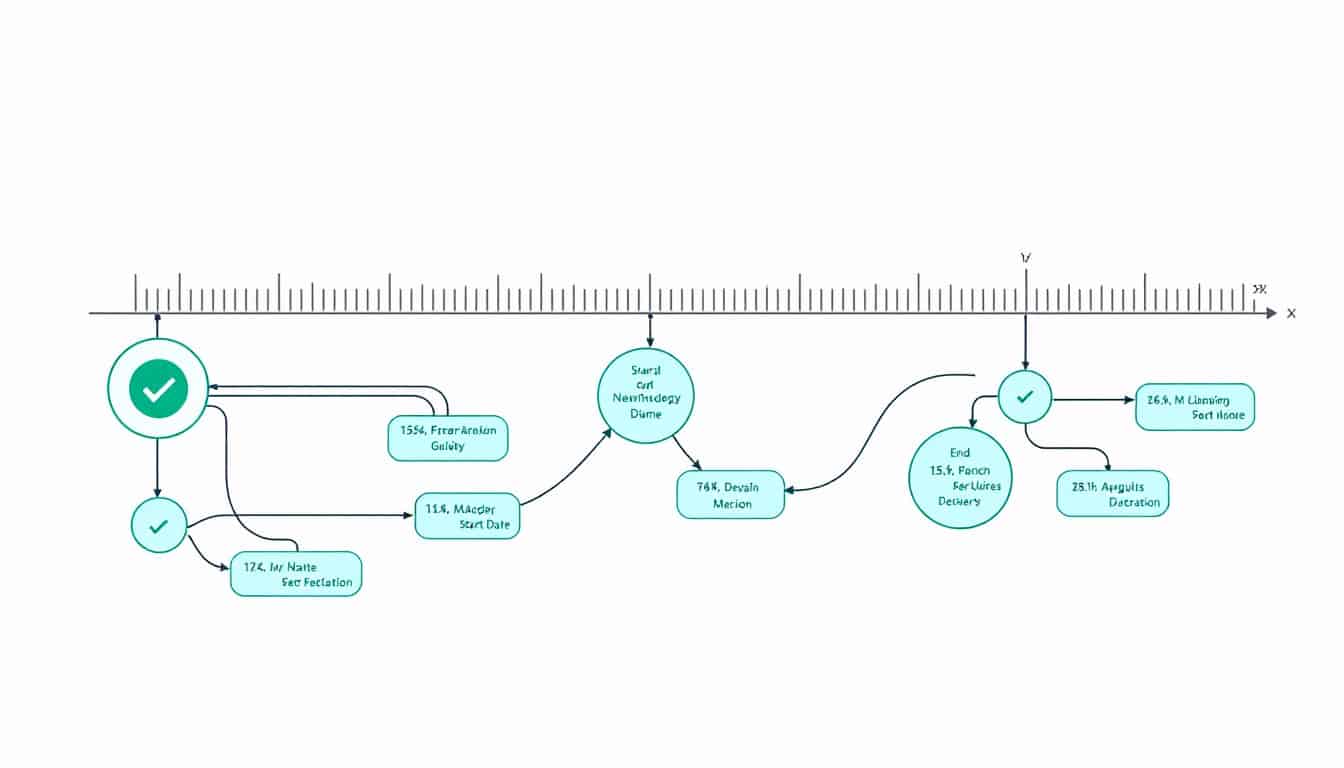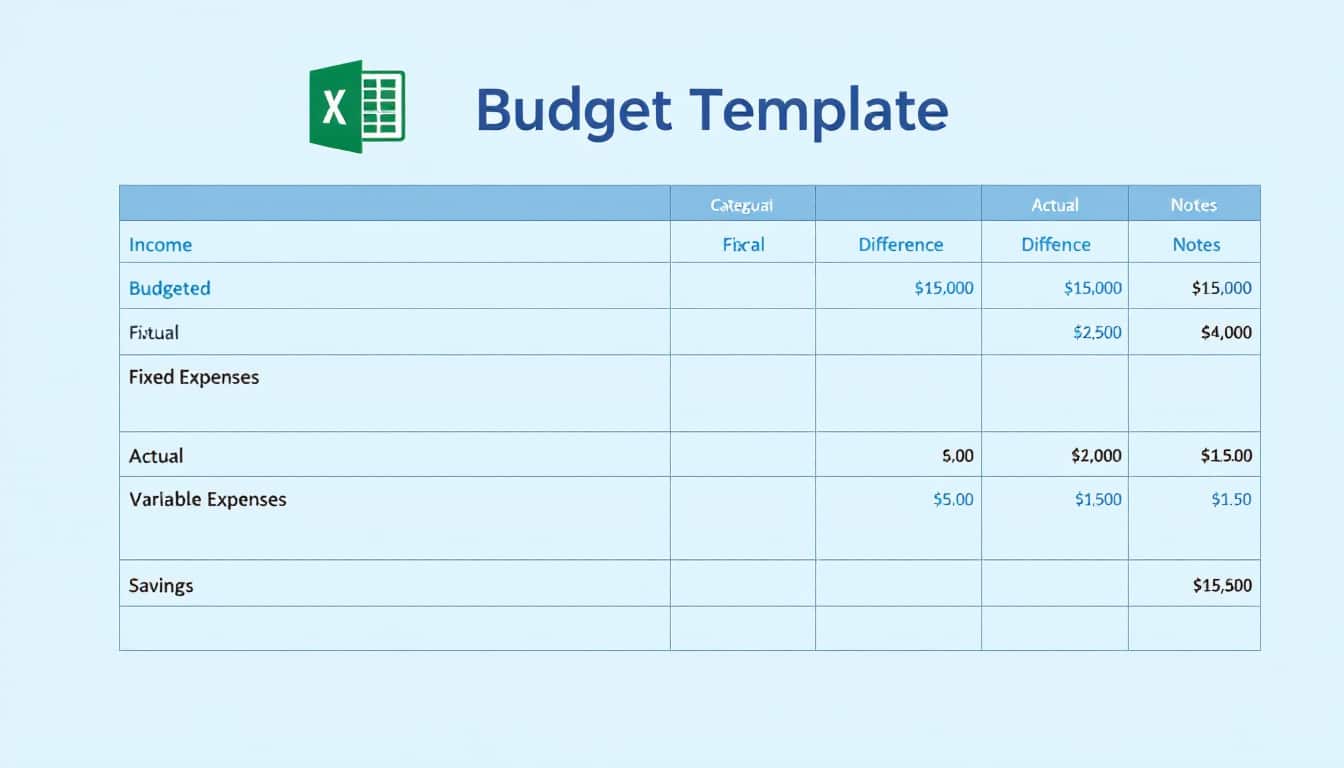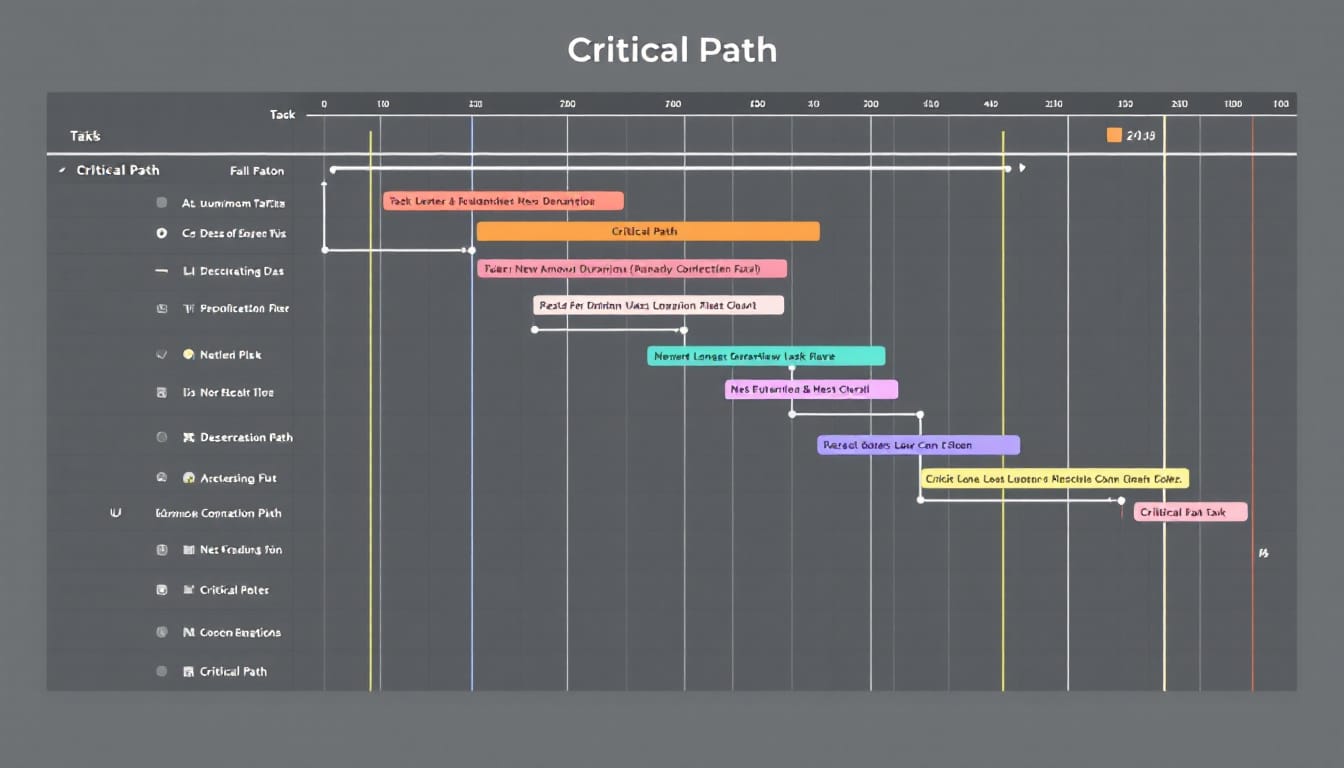“`html
🔥 Nous recommandons Ideamap
Ideamap est l’outil idéal pour un brainstorming ou un projet collaboratif. Grâce son interface facile et à ses fonctions IA, Ideamap booste votre créativité tout en favorisant une meilleure organisation de vos idées pour atteindre vos objectifs.
Before the era of project management software,
manual methods and traditional tools dominated project organization.
This management style added time and effort, especially for large-scale projects.
Paper-based approaches, physical communication, and manual resource management seem to belong to another era. Today, project management software is revolutionizing the way teams plan, track, and execute their tasks. With features such as Gantt charts, kanban boards, and resource allocation, these tools centralize all necessary information to successfully carry out a project. By automating many aspects of management, they foster better collaboration and greater efficiency within teams.

In today’s dynamic business world, project management is essential to ensure the success and efficiency of initiatives. A project management software is an indispensable tool that helps teams plan, execute, and track their projects in an organized and productive manner. But what exactly is project management software, and why is it so crucial for modern businesses? Let’s explore this in detail.
Definition of project management software
A project management software is an application designed to help individuals and teams plan, organize, and manage the resources needed to achieve specific goals. It centralizes all information related to the project, such as tasks, schedules, resources, budgets, and communications, thus providing a clear and accessible overview in real time.
Before the advent of these software applications, project management relied on manual methods and traditional tools such as spreadsheets and paper communications. These methods were not only time-consuming but also became inefficient as the size and complexity of projects increased. Today, project management software automates many tasks, reducing manual effort and improving collaboration among team members.
Typical features include task management, Gantt charts, kanban boards, resource allocation, and integrated communication tools. These tools allow teams to create project timelines, assign tasks, set deadlines, and track progress transparently.
To learn more about the different types of software and their benefits, you can check out the 8 best project timeline management software for 2025.
Why use project management software?
Using a project management software offers numerous advantages that can transform the way teams work together and achieve their goals. Here are some key reasons why these tools have become essential:
- Centralization of information: All project-related data is gathered in one place, making it easier to access and manage information.
- Improved collaboration: Teams can communicate effectively, share files, and track updates in real time, reducing misunderstandings and delays.
- Effective resource management: Software allows for optimal allocation of human and material resources, avoiding conflicts and overload.
- Progress tracking: With integrated tracking tools, managers can monitor the progress of tasks and projects, identify bottlenecks, and adjust plans accordingly.
- Meeting deadlines and budgets: Planning and financial tracking features help keep projects within set limits, thus avoiding cost overruns and delays.
- Analytics and reports: Reporting capabilities provide valuable insights into project performance, facilitating informed decision-making.
By integrating these advantages, project management software not only enhances operational efficiency but also increases client and stakeholder satisfaction. To understand how to effectively manage risks in your projects, visit this article on the risk management process.
What are the key features of project management software?
Project management software offers a variety of features designed to cover all aspects of project management. Here are the main features you should look for:
Task management
This feature allows you to break a project down into individual tasks, assign these tasks to specific team members, set priorities, and establish deadlines. Effective task management ensures that every aspect of the project is covered and that team members know exactly what is expected of them.
Gantt charts
Gantt charts are visual tools that represent the project timeline. They show tasks, their durations, dependencies, and overall progress. These charts help managers plan the steps of the project and identify potential delays or overlaps.
Kanban boards
Kanban boards provide a visual view of the workflow, allowing teams to track task status in real time. Each task is represented by a card that moves through different columns, such as “To Do,” “In Progress,” and “Done.” This system promotes transparency and facilitates priority management.
Resource allocation
Resource management is crucial to avoid work overload and availability conflicts. Project management software allows you to track the usage of human and material resources, ensuring balanced and effective distribution.
Time tracking
Time tracking helps measure productivity and manage costs. By recording the time spent on each task, teams can analyze their efficiency and adjust their strategies accordingly. This also facilitates accurate billing for paid projects.
Budget and cost management
Monitoring expenses and managing budgets is essential to maintain the financial viability of a project. Project management software offers tools to track costs in real time, forecast future expenses, and alert managers in case of budget overruns.
Collaboration tools
Integrated collaboration features, such as messaging, file sharing, and commenting systems, facilitate communication among team members, regardless of their geographical location. This strengthens team cohesion and ensures better coordination.
To delve into specific features like cost management, check out the best project cost management software.
What types of project management software exist?
There are a variety of project management software, each designed to meet specific needs. Here are the main types available on the market:
Gantt chart software
These tools primarily focus on creating and managing Gantt charts. They are ideal for planning and tracking complex projects with multiple dependencies. To discover the best options, visit the 8 best project timeline management software for 2025.
Task management software
These software applications are perfect for organizing and tracking tasks throughout the project lifecycle. They offer tools to assign responsibilities, set deadlines, and monitor progress, making them ideal for small teams and simple projects.
Project portfolio management software
Designed for organizations managing multiple projects simultaneously, these tools provide an overview of all ongoing projects. They assist in resource distribution, risk management, and performance tracking to ensure projects align with the company’s strategic objectives.
Risk management software
These tools allow for identifying, assessing, and mitigating potential risks in a project. They help teams develop contingency plans, monitor risk factors, and reduce uncertainties associated with projects. Learn how to manage risks effectively by reading this article on risk management.
Resource management software
Designed to track and manage human and material resources, these software ensure optimal use of available resources. They prevent overload or underutilization of resources, thereby ensuring smooth project progress.
Time management software
These tools help track the time spent on each task and project, providing valuable insights into productivity and facilitating accurate billing for clients. To learn more about the phases of project management, check out the 5 phases of project management.
Kanban software
Using visual boards, these software allow for flexible workflow management. Tasks are represented by cards that move through columns representing different steps in the process, which is particularly useful for agile teams.
Each type of software offers specific advantages depending on the needs and project management methodology of your team.
What are the popular project management software?
The market for project management software is vast, with numerous options tailored to different needs and budgets. Here are some of the most popular:
- Microsoft Project: One of the oldest and most respected names in the industry, ideal for traditional project management.
- Smartsheet: Based on spreadsheet functionality, it is extremely flexible and easy to use.
- Jira: Perfect for managing agile projects, specializing in sprint planning and kanban boards.
- Monday.com: A work management platform known for its simplified task management and smooth collaboration.
- Wrike: A customizable software that helps teams in niche industries reach their goals.
Each of these tools offers unique features that can meet various project types and management methodologies. For a detailed analysis of the best tools, you can check out the top 8 legal project management software.
How to choose the right project management software?
Choosing the right project management software can seem like a daunting task due to the multitude of options available. However, by following a few key steps, you can find the tool that best meets your team’s and projects’ needs.
- Assess your team’s needs: Identify the essential features your team needs, such as task management, collaboration, time tracking, or resource management.
- Consider ease of use: An intuitive software will reduce training time and increase adoption by team members.
- Check scalability: Ensure that the software can scale with your company’s growth and adapt to increasingly complex projects.
- Compare costs: Analyze the different pricing options and choose software that offers good value for money based on your budget.
- Integrations with other tools: Check if the software can integrate with other applications you are already using, such as CRMs, accounting tools, or communication platforms.
- Consult reviews and testimonials: Look for user reviews and case studies to understand the advantages and disadvantages of each software.
By considering these factors, you will be better equipped to select a project management software that not only meets your team’s current needs but also supports its future growth.
To deepen your knowledge of project management, explore the risk management process and discover how to optimize your projects today.
Les 10 meilleurs logiciels de gestion de projet en 2024 : comparatif et avis.
— Bridge Communication (@AgenceBridge360) September 30, 2024
Vous êtes à la recherche du meilleur logiciel de gestion de projet du moment ?https://t.co/rfAmQCqJVt




